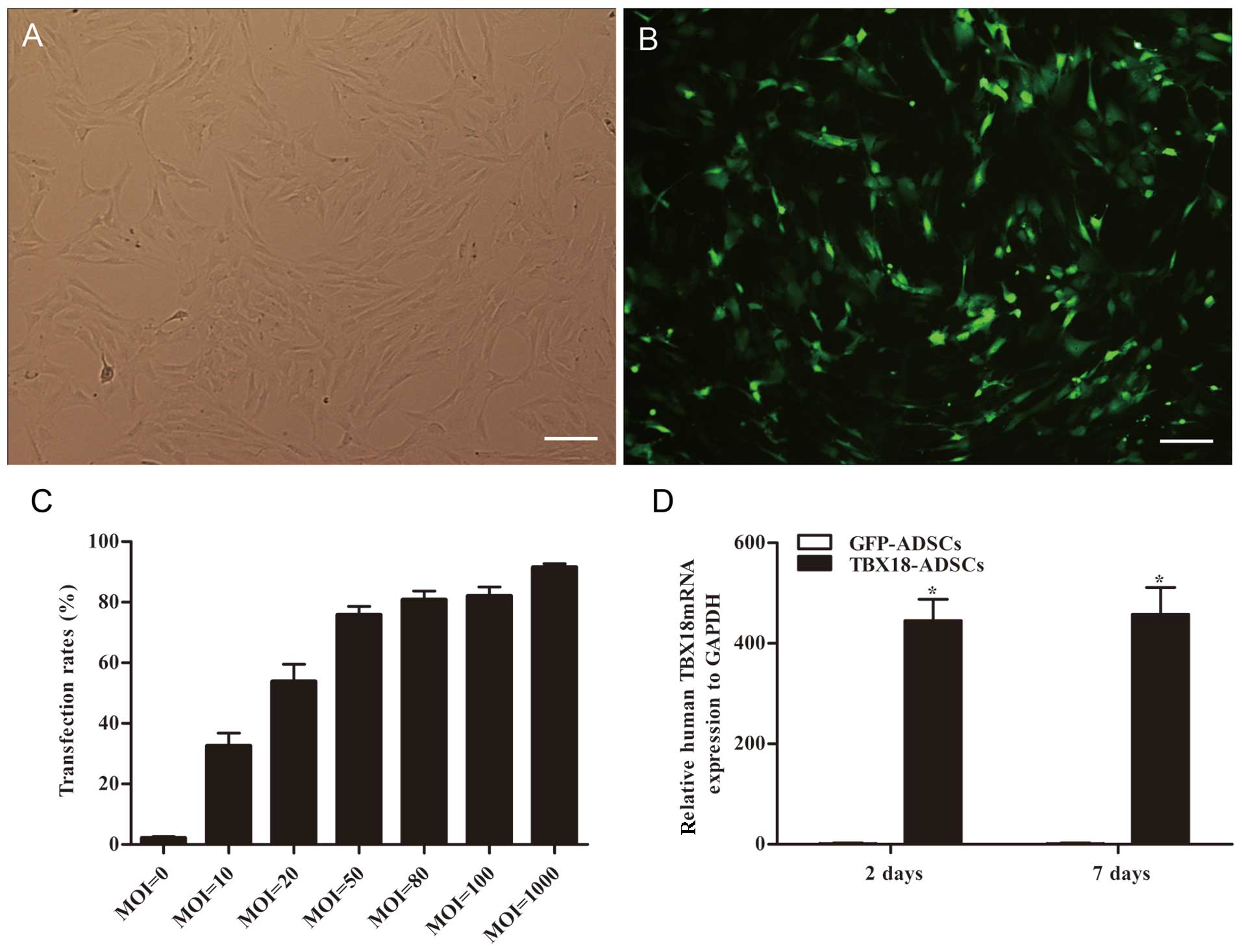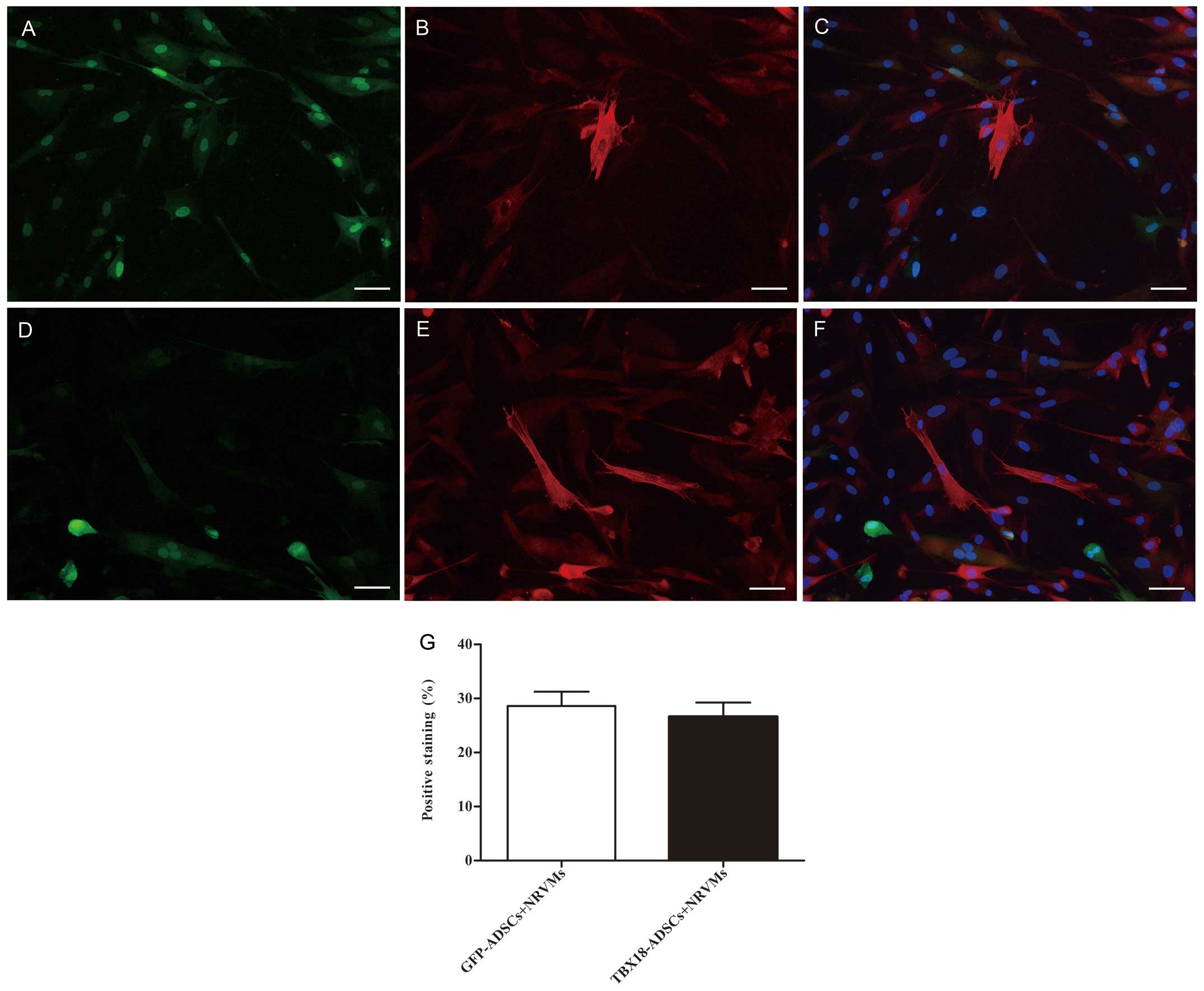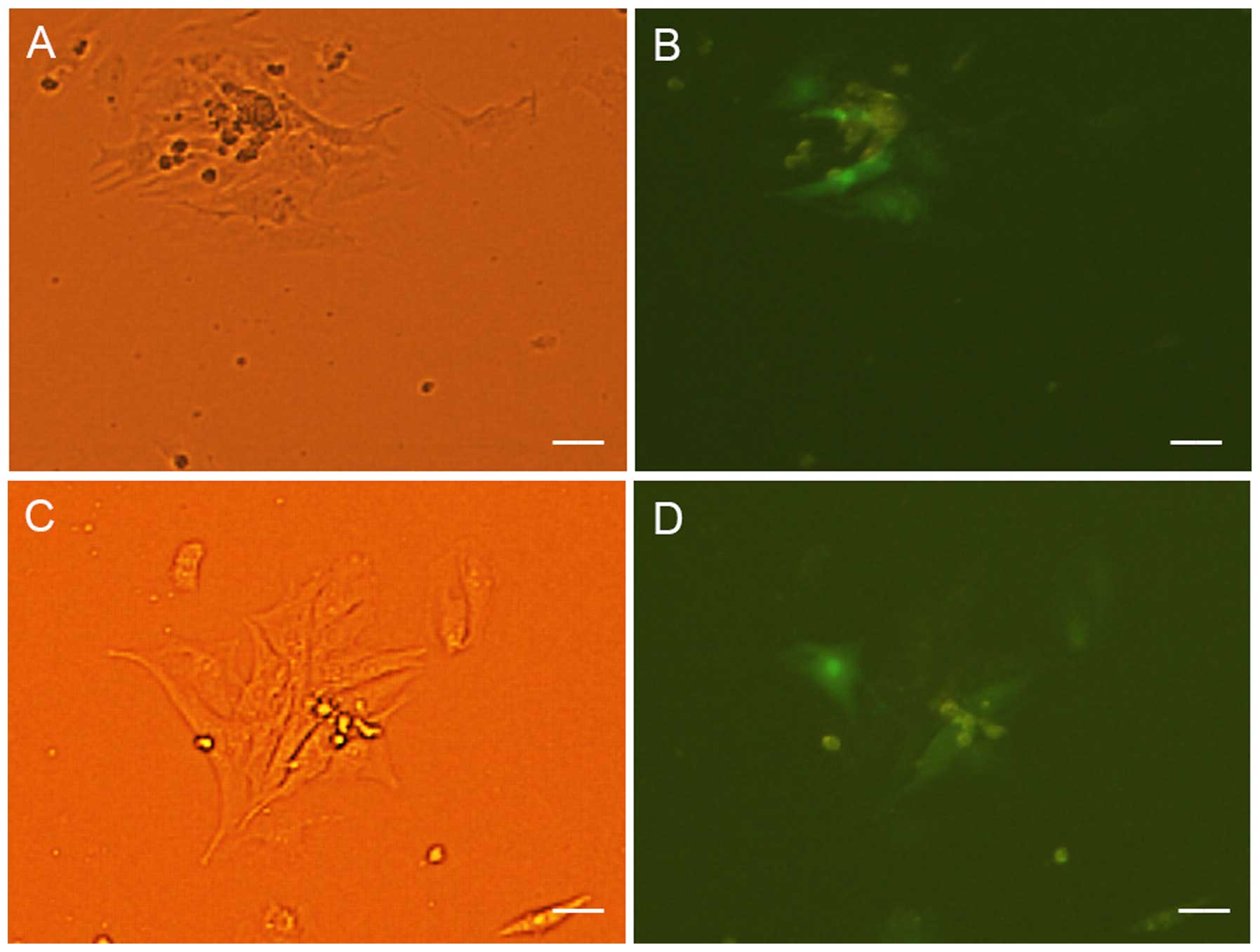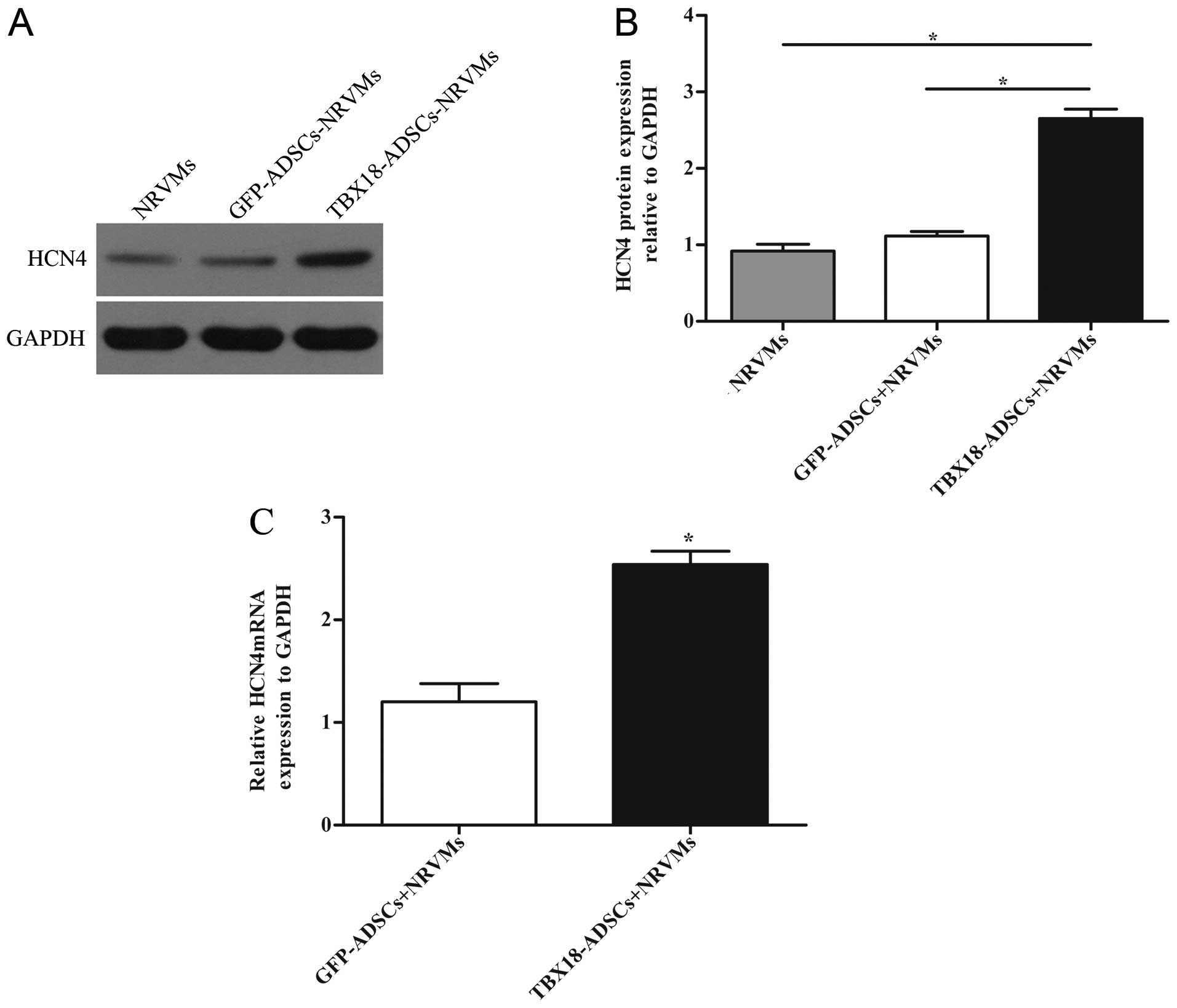|
1
|
Taha MF and Hedayati V: Isolation,
identification and multipotential differentiation of mouse adipose
tissue-derived stem cells. Tissue Cell. 42:211–216. 2010.
View Article : Google Scholar : PubMed/NCBI
|
|
2
|
Palpant NJ, Yasuda S, MacDougald O and
Metzger JM: Non-canonical Wnt signaling enhances differentiation of
Sca1+/c-kit+ adipose-derived murine stromal
vascular cells into spontaneously beating cardiac myocytes. J Mol
Cell Cardiol. 43:362–370. 2007. View Article : Google Scholar : PubMed/NCBI
|
|
3
|
Choi YS, Dusting GJ, Stubbs S,
Arunothayaraj S, Han XL, Collas P, Morrison WA and Dilley RJ:
Differentiation of human adipose-derived stem cells into beating
cardiomyocytes. J Cell Mol Med. 14:878–889. 2010. View Article : Google Scholar : PubMed/NCBI
|
|
4
|
Bai X, Yan Y, Song YH, Seidensticker M,
Rabinovich B, Metzele R, Bankson JA, Vykoukal D and Alt E: Both
cultured and freshly isolated adipose tissue-derived stem cells
enhance cardiac function after acute myocardial infarction. Eur
Heart J. 31:489–501. 2010. View Article : Google Scholar
|
|
5
|
Planat-Bénard V, Menard C, André M, Puceat
M, Perez A, Garcia-Verdugo JM, Pénicaud L and Casteilla L:
Spontaneous cardiomyocyte differentiation from adipose tissue
stroma cells. Circ Res. 94:223–229. 2004. View Article : Google Scholar
|
|
6
|
Wiese C, Grieskamp T, Airik R, Mommersteeg
MT, Gardiwal A, de Gier-de Vries C, Schuster-Gossler K, Moorman AF,
Kispert A and Christoffels VM: Formation of the sinus node head and
differentiation of sinus node myocardium are independently
regulated by Tbx18 and Tbx3. Circ Res. 104:388–397. 2009.
View Article : Google Scholar
|
|
7
|
Zhou B, Ma Q, Rajagopal S, Wu SM, Domian
I, Rivera-Feliciano J, Jiang D, von Gise A, Ikeda S, Chien KR, et
al: Epicardial progenitors contribute to the cardiomyocyte lineage
in the developing heart. Nature. 454:109–113. 2008. View Article : Google Scholar : PubMed/NCBI
|
|
8
|
Christoffels VM, Grieskamp T, Norden J,
Mommersteeg MT, Rudat C and Kispert A: Tbx18 and the fate of
epicardial progenitors. Nature. 458:E8–E10. 2009. View Article : Google Scholar : PubMed/NCBI
|
|
9
|
Kapoor N, Liang W, Marbán E and Cho HC:
Direct conversion of quiescent cardiomyocytes to pacemaker cells by
expression of Tbx18. Nat Biotechnol. 31:54–62. 2013. View Article : Google Scholar
|
|
10
|
Hu YF, Dawkins JF, Cho HC, Marbán E and
Cingolani E: Biological pacemaker created by minimally invasive
somatic reprogramming in pigs with complete heart block. Sci Transl
Med. 6:245ra942014. View Article : Google Scholar : PubMed/NCBI
|
|
11
|
Yang J, Song T, Wu P, Chen Y, Fan X, Chen
H, Zhang J and Huang C: Differentiation potential of human
mesenchymal stem cells derived from adipose tissue and bone marrow
to sinus node-like cells. Mol Med Rep. 5:108–113. 2012.
|
|
12
|
Bai D, del Corsso C, Srinivas M and Spray
DC: Block of specific gap junction channel subtypes by
2-aminoethoxydiphenyl borate (2-APB). J Pharmacol Exp Ther.
319:1452–1458. 2006. View Article : Google Scholar : PubMed/NCBI
|
|
13
|
Harks EG, Camiña JP, Peters PH, Ypey DL,
Scheenen WJ, van Zoelen EJ and Theuvenet AP: Besides affecting
intracellular calcium signaling, 2-APB reversibly blocks gap
junctional coupling in confluent monolayers, thereby allowing
measurement of single-cell membrane currents in undissociated
cells. FASEB J. 17:941–943. 2003.PubMed/NCBI
|
|
14
|
Ionta V, Liang W, Kim EH, Rafie R,
Giacomello A, Marbán E and Cho HC: SHOX2 overexpression favors
differentiation of embryonic stem cells into cardiac pacemaker
cells, improving biological pacing ability. Stem Cell Rep.
4:129–142. 2015. View Article : Google Scholar
|
|
15
|
Jung JJ, Husse B, Rimmbach C, Krebs S,
Stieber J, Steinhoff G, Dendorfer A, Franz WM and David R:
Programming and isolation of highly pure physiologically and
pharmacologically functional sinus-nodal bodies from pluripotent
stem cells. Stem Cell Rep. 2:592–605. 2014. View Article : Google Scholar
|
|
16
|
Bakker ML, Boink GJ, Boukens BJ, Verkerk
AO, van den Boogaard M, den Haan AD, Hoogaars WM, Buermans HP, de
Bakker JM, Seppen J, et al: T-box transcription factor TBX3
reprogrammes mature cardiac myocytes into pacemaker-like cells.
Cardiovasc Res. 94:439–449. 2012. View Article : Google Scholar : PubMed/NCBI
|
|
17
|
Feng Y, Luo S and Zhiyuan S: Canine bone
marrow mesenchymal stromal cells modified with Shox2 gene rebuild
biological pacemakers in vitro. Heart. 99:A42013.
|
|
18
|
Ball SG, Shuttleworth AC and Kielty CM:
Direct cell contact influences bone marrow mesenchymal stem cell
fate. Int J Biochem Cell Biol. 36:714–727. 2004. View Article : Google Scholar : PubMed/NCBI
|
|
19
|
Fukuhara S, Tomita S, Yamashiro S,
Morisaki T, Yutani C, Kitamura S and Nakatani T: Direct cell-cell
interaction of cardiomyocytes is key for bone marrow stromal cells
to go into cardiac lineage in vitro. J Thorac Cardiovasc Surg.
125:1470–1480. 2003. View Article : Google Scholar : PubMed/NCBI
|
|
20
|
Schuleri KH, Boyle AJ and Hare JM:
Mesenchymal stem cells for cardiac regenerative therapy. Handbook
Exp Pharmacol. 180:195–218. 2007. View Article : Google Scholar
|
|
21
|
Zhu Y, Liu T, Song K, Ning R, Ma X and Cui
Z: ADSCs differentiated into cardiomyocytes in cardiac
microenvironment. Mol Cell Biochem. 324:117–129. 2009. View Article : Google Scholar
|
|
22
|
Stieber J, Hofmann F and Ludwig A:
Pacemaker channels and sinus node arrhythmia. Trends Cardiovasc
Med. 14:23–28. 2004. View Article : Google Scholar : PubMed/NCBI
|
|
23
|
Shi W, Wymore R, Yu H, Wu J, Wymore RT,
Pan Z, Robinson RB, Dixon JE, McKinnon D and Cohen IS: Distribution
and prevalence of hyperpolarization-activated cation channel (HCN)
mRNA expression in cardiac tissues. Circ Res. 85:e1–e6. 1999.
View Article : Google Scholar : PubMed/NCBI
|
|
24
|
Choi YS, Matsuda K, Dusting GJ, Morrison
WA and Dilley RJ: Engineering cardiac tissue in vivo from human
adipose-derived stem cells. Biomaterials. 31:2236–2242. 2010.
View Article : Google Scholar
|
|
25
|
Chauveau S, Brink PR and Cohen IS: Stem
cell-based biological pacemakers from proof of principle to
therapy: a review. Cytotherapy. 16:873–880. 2014. View Article : Google Scholar : PubMed/NCBI
|
|
26
|
Lakatta EG, Maltsev VA and Vinogradova TM:
A coupled SYSTEM of intracellular Ca2+ clocks and
surface membrane voltage clocks controls the timekeeping mechanism
of the heart's pacemaker. Circ Res. 106:659–673. 2010. View Article : Google Scholar : PubMed/NCBI
|
|
27
|
Doss MX, Di Diego JM, Goodrow RJ, Wu Y,
Cordeiro JM, Nesterenko VV, Barajas-Martínez H, Hu D, Urrutia J,
Desai M, et al: Maximum diastolic potential of human induced
pluripotent stem cell-derived cardiomyocytes depends critically on
I(Kr). PLoS One. 7:e402882012. View Article : Google Scholar : PubMed/NCBI
|















